 Contents Title Page Key to Symbols used 4 Acknowledgements 5 Bibliography 6 Introduction 7 The Bg5 QGD 1a Bg5 QGD Introduction 14 1b Bg5 QGD Theory 28 The Bf4 QGD 2a Bf4 QGD Introduction 60 2b Bf4 QGD Theory 71 The Exchange Variation 3a Exchange QGD Introduction 105 3b Exchange QGD Theory (0-0-0 Lines) 119 3c Exchange QGD Theory (0-0 Lines) 149 QGD Sidelines 4a QGD Sidelines Introduction 167 4b QGD Sidelines Theory 171 The Catalan 5a Catalan Introduction 185 5b Catalan Theory (Part 1) 192 5c Catalan Theory (Part 2) 219 d-pawn Openings 6a Introduction to d-pawn Systems 242 6b Theory of Move 2 Options 247 6c Repertoire vs FiCTaL Systems (Fianchetto, Colle, Torre and London) 267 Bonus Chapters 7a Introduction to Bonus Chapters 307 7b English Starter Theory 309 7c Reti & KIA Starter Theory 317 Index of Main Games 327 Variation Index 329
Contents Title Page Key to Symbols used 4 Acknowledgements 5 Bibliography 6 Introduction 7 The Bg5 QGD 1a Bg5 QGD Introduction 14 1b Bg5 QGD Theory 28 The Bf4 QGD 2a Bf4 QGD Introduction 60 2b Bf4 QGD Theory 71 The Exchange Variation 3a Exchange QGD Introduction 105 3b Exchange QGD Theory (0-0-0 Lines) 119 3c Exchange QGD Theory (0-0 Lines) 149 QGD Sidelines 4a QGD Sidelines Introduction 167 4b QGD Sidelines Theory 171 The Catalan 5a Catalan Introduction 185 5b Catalan Theory (Part 1) 192 5c Catalan Theory (Part 2) 219 d-pawn Openings 6a Introduction to d-pawn Systems 242 6b Theory of Move 2 Options 247 6c Repertoire vs FiCTaL Systems (Fianchetto, Colle, Torre and London) 267 Bonus Chapters 7a Introduction to Bonus Chapters 307 7b English Starter Theory 309 7c Reti & KIA Starter Theory 317 Index of Main Games 327 Variation Index 329  A Classical RepertoirePlaying 1.d4 d5 By Nikolaos Ntirlis Quality Chess http://www.qualitychess.co.uk First edition 2017 by Quality Chess UK Ltd Copyright 2017 Nikolaos Ntirlis PLAYING 1.d4 d5 A CLASSICAL REPERTOIRE All rights reserved. No part of this publication may be reproduced, stored in a retrieval system or transmitted in any form or by any means, electronic, electrostatic, magnetic tape, photocopying, recording or otherwise, without prior permission of the publisher. Paperback ISBN 978-1-78483-042-7 Hardcover ISBN 978-1-78483-043-4 All sales or enquiries should be directed to Quality Chess UK Ltd, Central Chambers, Suite 247, 11 Bothwell Street, Glasgow G2 6LY, United Kingdom Phone +44 141 204 2073 e-mail: info@qualitychess.co.uk website: www.qualitychess.co.uk Distributed in North America by National Book Network Distributed in Rest of the World by Quality Chess UK Ltd through Sunrise Handicrafts, ul. Poligonowa 35A, 20-817 Lublin, Poland Typeset by Jacob Aagaard Proofreading by Colin McNab & John Shaw Edited by Andrew Greet Cover design by www.adamsondesign.com Cover photo by www.capture365.com Key to symbols used White is slightly better Black is slightly better White is better Black is better + White has a decisive advantage + Black has a decisive advantage = equality with compensation with counterplay with an initiative unclear a weak move ? a blunder ?? a good move ! an excellent move !! a move worth considering !? a move of doubtful value ?! only move mate # Acknowledgements First and foremost, Id like to say a big Thank You to Georgia for her patience when she was hearing from me, I have to finish and send this to Andrew tonight, night after night after night... Secondly, Id like to thank John, Jacob and Andrew for their continuous feedback and support, not only in matters relating to the authoring of this book. Lastly, thanks to all of those people who told me that they liked Playing 1.e4 e5 and expressed their enthusiasm for this companion volume.
A Classical RepertoirePlaying 1.d4 d5 By Nikolaos Ntirlis Quality Chess http://www.qualitychess.co.uk First edition 2017 by Quality Chess UK Ltd Copyright 2017 Nikolaos Ntirlis PLAYING 1.d4 d5 A CLASSICAL REPERTOIRE All rights reserved. No part of this publication may be reproduced, stored in a retrieval system or transmitted in any form or by any means, electronic, electrostatic, magnetic tape, photocopying, recording or otherwise, without prior permission of the publisher. Paperback ISBN 978-1-78483-042-7 Hardcover ISBN 978-1-78483-043-4 All sales or enquiries should be directed to Quality Chess UK Ltd, Central Chambers, Suite 247, 11 Bothwell Street, Glasgow G2 6LY, United Kingdom Phone +44 141 204 2073 e-mail: info@qualitychess.co.uk website: www.qualitychess.co.uk Distributed in North America by National Book Network Distributed in Rest of the World by Quality Chess UK Ltd through Sunrise Handicrafts, ul. Poligonowa 35A, 20-817 Lublin, Poland Typeset by Jacob Aagaard Proofreading by Colin McNab & John Shaw Edited by Andrew Greet Cover design by www.adamsondesign.com Cover photo by www.capture365.com Key to symbols used White is slightly better Black is slightly better White is better Black is better + White has a decisive advantage + Black has a decisive advantage = equality with compensation with counterplay with an initiative unclear a weak move ? a blunder ?? a good move ! an excellent move !! a move worth considering !? a move of doubtful value ?! only move mate # Acknowledgements First and foremost, Id like to say a big Thank You to Georgia for her patience when she was hearing from me, I have to finish and send this to Andrew tonight, night after night after night... Secondly, Id like to thank John, Jacob and Andrew for their continuous feedback and support, not only in matters relating to the authoring of this book. Lastly, thanks to all of those people who told me that they liked Playing 1.e4 e5 and expressed their enthusiasm for this companion volume.
Nikos Ntirlis Thessaloniki, August 2017 Bibliography Avrukh: Grandmaster Repertoire 1 1.d4 Volume One, Quality Chess 2008 Avrukh: Grandmaster Repertoire 1A The Catalan, Quality Chess 2015 Avrukh: Grandmaster Repertoire 11 Beating 1.d4 Sidelines, Quality Chess 2012 Bologan: The Powerful Catalan, New In Chess 2012 Bronznik: The Colle-Koltanowski System, Kania 2003 Burgess: A Cunning Chess Opening Repertoire for White, Gambit 2013 Cox: Declining the Queens Gambit, Everyman Chess 2011 Dreev: Bf4 in the Queens Gambit and the Exchange Slav, Chess Stars 2016 Flores Rios: Chess Structures: A Grandmaster Guide, Quality Chess 2015 Kasparov: On My Great Predecessors Parts I-V, Everyman Chess 2003-2006 Kaufman: The Kaufman Repertoire for Black and White, New In Chess 2012 Khalifman: Opening for White according to Kramnik Volume 5, Chess Stars 2002 Kornev: A Practical White Repertoire with 1.d4 and 2.c4 Volume 1, Chess Stars 2013 Lakdawala: A Ferocious Opening Repertoire, Everyman Chess 2010 Marin: Grandmaster Repertoire: The English Opening Volume Two, Quality Chess 2010 McDonald: Starting Out: Queens Gambit Declined, Everyman Chess 2006 Palliser: Starting Out: d-Pawn Attacks, Everyman Chess 2008 Palliser: The Torre Attack: Move by Move, Everyman Chess 2012 Rizzitano: Chess Explained: The Queens Gambit Declined, Gambit 2007 Rizzitano: How to Beat 1.d4, Gambit 2005 Romero Holmes & de Prado Rodriguez: The Agile London System, New In Chess 2016 Sadler: Queens Gambit Declined, Everyman Chess 2000 Schandorff: Playing 1.d4 The Queens Gambit, Quality Chess 2012 Scheerer: The Blackmar-Diemer Gambit, Everyman Chess 2011 Sedlak: Winning with the Modern London System, Chess Evolution 2016 Sokolov, I: Winning Chess Middlegames: An Essential Guide to Pawn Structures, New In Chess 2009 Watson: A Strategic Chess Opening Repertoire for White, Gambit 2012 Electronic Resources ChessBase Magazine Chesspublishing.com 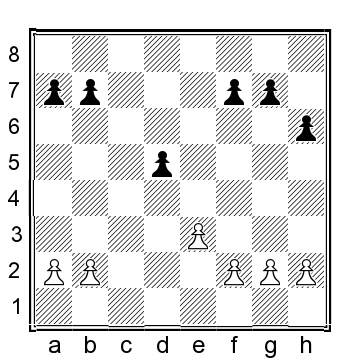 Introduction This book presents a complete guide for Black after 1.d4 d5, the backbone of which is the Queens Gambit Declined (henceforth abbreviated to QGD), which arises after 2.c4 e6. It has been more than a year since Playing 1.e4 e5 A Classical Repertoire hit the market, so the time has come to complete the picture with Playing 1.d4 d5. Although the previous work and the current one share a lot of similarities (the title and the author are two obvious ones!), in many ways they are completely different books. The Spanish, the Italian, the Scotch and other 1.e4 e5 lines are generally rather concrete in nature, making it hard to pick out common characteristics and play the resulting positions following a strategic masterplan. The openings stemming from 1.d4 d5 are of a completely different nature. No matter which major defence you choose, you tend to come across the same pawn structures and strategic patterns again and again. You know the pawn structure? You know how to play the opening! This book is structured in an entirely different way from my previous work. You know the pawn structure? You know how to play the opening! This book is structured in an entirely different way from my previous work.
Introduction This book presents a complete guide for Black after 1.d4 d5, the backbone of which is the Queens Gambit Declined (henceforth abbreviated to QGD), which arises after 2.c4 e6. It has been more than a year since Playing 1.e4 e5 A Classical Repertoire hit the market, so the time has come to complete the picture with Playing 1.d4 d5. Although the previous work and the current one share a lot of similarities (the title and the author are two obvious ones!), in many ways they are completely different books. The Spanish, the Italian, the Scotch and other 1.e4 e5 lines are generally rather concrete in nature, making it hard to pick out common characteristics and play the resulting positions following a strategic masterplan. The openings stemming from 1.d4 d5 are of a completely different nature. No matter which major defence you choose, you tend to come across the same pawn structures and strategic patterns again and again. You know the pawn structure? You know how to play the opening! This book is structured in an entirely different way from my previous work. You know the pawn structure? You know how to play the opening! This book is structured in an entirely different way from my previous work.
Every major set-up has a dedicated introduction, where I present vital information about thematic pawn structures and plans. The challenge here was to present useful, relevant concepts, without crossing too far into the territory of a specialist middlegame book. My goal was to keep things practical, by focusing on specific themes which crop up again and again in my chosen repertoire. As an example, take the Isolated Queens Pawn, which often arises in our repertoire against the Bg5 QGD, as found in Chapter 1b: The IQP is perhaps the most written-about structure in chess, and it would be silly for me to try and discuss every facet of it in this book. Instead, in Chapter 1a, I will mention some of the most important themes and scenarios which 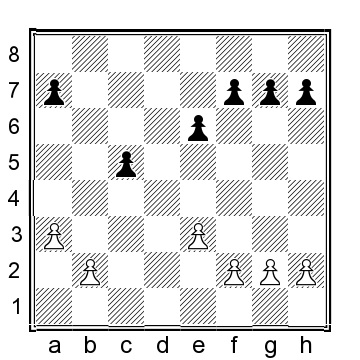 are particularly relevant to the types of IQP positions we may reach in the proposed repertoire. I also offer some guidance on how to play against the IQP, including certain scenarios in which we should avoid that structure altogether.
are particularly relevant to the types of IQP positions we may reach in the proposed repertoire. I also offer some guidance on how to play against the IQP, including certain scenarios in which we should avoid that structure altogether.
I believe the most valuable parts of my introductions are those places where I was able to identify a structure which commonly occurs in the specific variation under discussion, but which has not (to my knowledge at least) been discussed in any general-purpose middlegame books. In such cases, I had to formulate my own principles and guidelines. Here are a few examples of the kinds of structures under discussion:
Next page
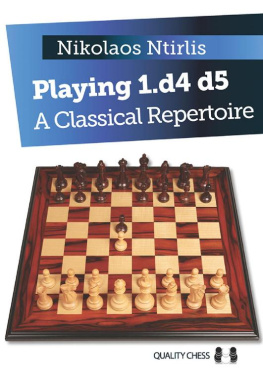
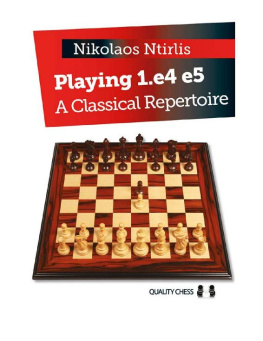
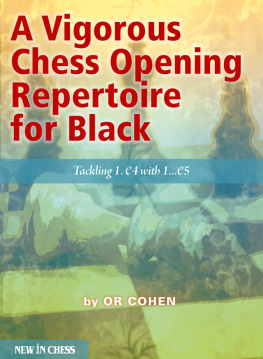
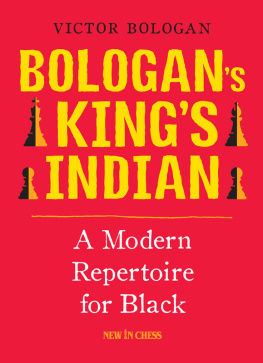

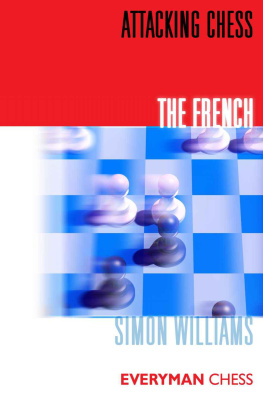

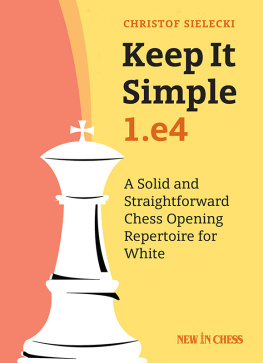
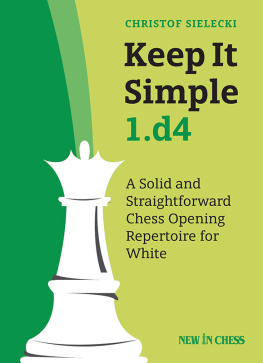


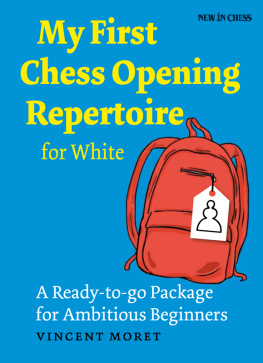
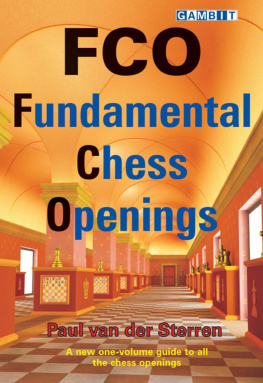
 Contents Title Page Key to Symbols used 4 Acknowledgements 5 Bibliography 6 Introduction 7 The Bg5 QGD 1a Bg5 QGD Introduction 14 1b Bg5 QGD Theory 28 The Bf4 QGD 2a Bf4 QGD Introduction 60 2b Bf4 QGD Theory 71 The Exchange Variation 3a Exchange QGD Introduction 105 3b Exchange QGD Theory (0-0-0 Lines) 119 3c Exchange QGD Theory (0-0 Lines) 149 QGD Sidelines 4a QGD Sidelines Introduction 167 4b QGD Sidelines Theory 171 The Catalan 5a Catalan Introduction 185 5b Catalan Theory (Part 1) 192 5c Catalan Theory (Part 2) 219 d-pawn Openings 6a Introduction to d-pawn Systems 242 6b Theory of Move 2 Options 247 6c Repertoire vs FiCTaL Systems (Fianchetto, Colle, Torre and London) 267 Bonus Chapters 7a Introduction to Bonus Chapters 307 7b English Starter Theory 309 7c Reti & KIA Starter Theory 317 Index of Main Games 327 Variation Index 329
Contents Title Page Key to Symbols used 4 Acknowledgements 5 Bibliography 6 Introduction 7 The Bg5 QGD 1a Bg5 QGD Introduction 14 1b Bg5 QGD Theory 28 The Bf4 QGD 2a Bf4 QGD Introduction 60 2b Bf4 QGD Theory 71 The Exchange Variation 3a Exchange QGD Introduction 105 3b Exchange QGD Theory (0-0-0 Lines) 119 3c Exchange QGD Theory (0-0 Lines) 149 QGD Sidelines 4a QGD Sidelines Introduction 167 4b QGD Sidelines Theory 171 The Catalan 5a Catalan Introduction 185 5b Catalan Theory (Part 1) 192 5c Catalan Theory (Part 2) 219 d-pawn Openings 6a Introduction to d-pawn Systems 242 6b Theory of Move 2 Options 247 6c Repertoire vs FiCTaL Systems (Fianchetto, Colle, Torre and London) 267 Bonus Chapters 7a Introduction to Bonus Chapters 307 7b English Starter Theory 309 7c Reti & KIA Starter Theory 317 Index of Main Games 327 Variation Index 329  A Classical RepertoirePlaying 1.d4 d5 By Nikolaos Ntirlis Quality Chess http://www.qualitychess.co.uk First edition 2017 by Quality Chess UK Ltd Copyright 2017 Nikolaos Ntirlis PLAYING 1.d4 d5 A CLASSICAL REPERTOIRE All rights reserved. No part of this publication may be reproduced, stored in a retrieval system or transmitted in any form or by any means, electronic, electrostatic, magnetic tape, photocopying, recording or otherwise, without prior permission of the publisher. Paperback ISBN 978-1-78483-042-7 Hardcover ISBN 978-1-78483-043-4 All sales or enquiries should be directed to Quality Chess UK Ltd, Central Chambers, Suite 247, 11 Bothwell Street, Glasgow G2 6LY, United Kingdom Phone +44 141 204 2073 e-mail: info@qualitychess.co.uk website: www.qualitychess.co.uk Distributed in North America by National Book Network Distributed in Rest of the World by Quality Chess UK Ltd through Sunrise Handicrafts, ul. Poligonowa 35A, 20-817 Lublin, Poland Typeset by Jacob Aagaard Proofreading by Colin McNab & John Shaw Edited by Andrew Greet Cover design by www.adamsondesign.com Cover photo by www.capture365.com Key to symbols used White is slightly better Black is slightly better White is better Black is better + White has a decisive advantage + Black has a decisive advantage = equality with compensation with counterplay with an initiative unclear a weak move ? a blunder ?? a good move ! an excellent move !! a move worth considering !? a move of doubtful value ?! only move mate # Acknowledgements First and foremost, Id like to say a big Thank You to Georgia for her patience when she was hearing from me, I have to finish and send this to Andrew tonight, night after night after night... Secondly, Id like to thank John, Jacob and Andrew for their continuous feedback and support, not only in matters relating to the authoring of this book. Lastly, thanks to all of those people who told me that they liked Playing 1.e4 e5 and expressed their enthusiasm for this companion volume.
A Classical RepertoirePlaying 1.d4 d5 By Nikolaos Ntirlis Quality Chess http://www.qualitychess.co.uk First edition 2017 by Quality Chess UK Ltd Copyright 2017 Nikolaos Ntirlis PLAYING 1.d4 d5 A CLASSICAL REPERTOIRE All rights reserved. No part of this publication may be reproduced, stored in a retrieval system or transmitted in any form or by any means, electronic, electrostatic, magnetic tape, photocopying, recording or otherwise, without prior permission of the publisher. Paperback ISBN 978-1-78483-042-7 Hardcover ISBN 978-1-78483-043-4 All sales or enquiries should be directed to Quality Chess UK Ltd, Central Chambers, Suite 247, 11 Bothwell Street, Glasgow G2 6LY, United Kingdom Phone +44 141 204 2073 e-mail: info@qualitychess.co.uk website: www.qualitychess.co.uk Distributed in North America by National Book Network Distributed in Rest of the World by Quality Chess UK Ltd through Sunrise Handicrafts, ul. Poligonowa 35A, 20-817 Lublin, Poland Typeset by Jacob Aagaard Proofreading by Colin McNab & John Shaw Edited by Andrew Greet Cover design by www.adamsondesign.com Cover photo by www.capture365.com Key to symbols used White is slightly better Black is slightly better White is better Black is better + White has a decisive advantage + Black has a decisive advantage = equality with compensation with counterplay with an initiative unclear a weak move ? a blunder ?? a good move ! an excellent move !! a move worth considering !? a move of doubtful value ?! only move mate # Acknowledgements First and foremost, Id like to say a big Thank You to Georgia for her patience when she was hearing from me, I have to finish and send this to Andrew tonight, night after night after night... Secondly, Id like to thank John, Jacob and Andrew for their continuous feedback and support, not only in matters relating to the authoring of this book. Lastly, thanks to all of those people who told me that they liked Playing 1.e4 e5 and expressed their enthusiasm for this companion volume. Introduction This book presents a complete guide for Black after 1.d4 d5, the backbone of which is the Queens Gambit Declined (henceforth abbreviated to QGD), which arises after 2.c4 e6. It has been more than a year since Playing 1.e4 e5 A Classical Repertoire hit the market, so the time has come to complete the picture with Playing 1.d4 d5. Although the previous work and the current one share a lot of similarities (the title and the author are two obvious ones!), in many ways they are completely different books. The Spanish, the Italian, the Scotch and other 1.e4 e5 lines are generally rather concrete in nature, making it hard to pick out common characteristics and play the resulting positions following a strategic masterplan. The openings stemming from 1.d4 d5 are of a completely different nature. No matter which major defence you choose, you tend to come across the same pawn structures and strategic patterns again and again. You know the pawn structure? You know how to play the opening! This book is structured in an entirely different way from my previous work. You know the pawn structure? You know how to play the opening! This book is structured in an entirely different way from my previous work.
Introduction This book presents a complete guide for Black after 1.d4 d5, the backbone of which is the Queens Gambit Declined (henceforth abbreviated to QGD), which arises after 2.c4 e6. It has been more than a year since Playing 1.e4 e5 A Classical Repertoire hit the market, so the time has come to complete the picture with Playing 1.d4 d5. Although the previous work and the current one share a lot of similarities (the title and the author are two obvious ones!), in many ways they are completely different books. The Spanish, the Italian, the Scotch and other 1.e4 e5 lines are generally rather concrete in nature, making it hard to pick out common characteristics and play the resulting positions following a strategic masterplan. The openings stemming from 1.d4 d5 are of a completely different nature. No matter which major defence you choose, you tend to come across the same pawn structures and strategic patterns again and again. You know the pawn structure? You know how to play the opening! This book is structured in an entirely different way from my previous work. You know the pawn structure? You know how to play the opening! This book is structured in an entirely different way from my previous work. are particularly relevant to the types of IQP positions we may reach in the proposed repertoire. I also offer some guidance on how to play against the IQP, including certain scenarios in which we should avoid that structure altogether.
are particularly relevant to the types of IQP positions we may reach in the proposed repertoire. I also offer some guidance on how to play against the IQP, including certain scenarios in which we should avoid that structure altogether.